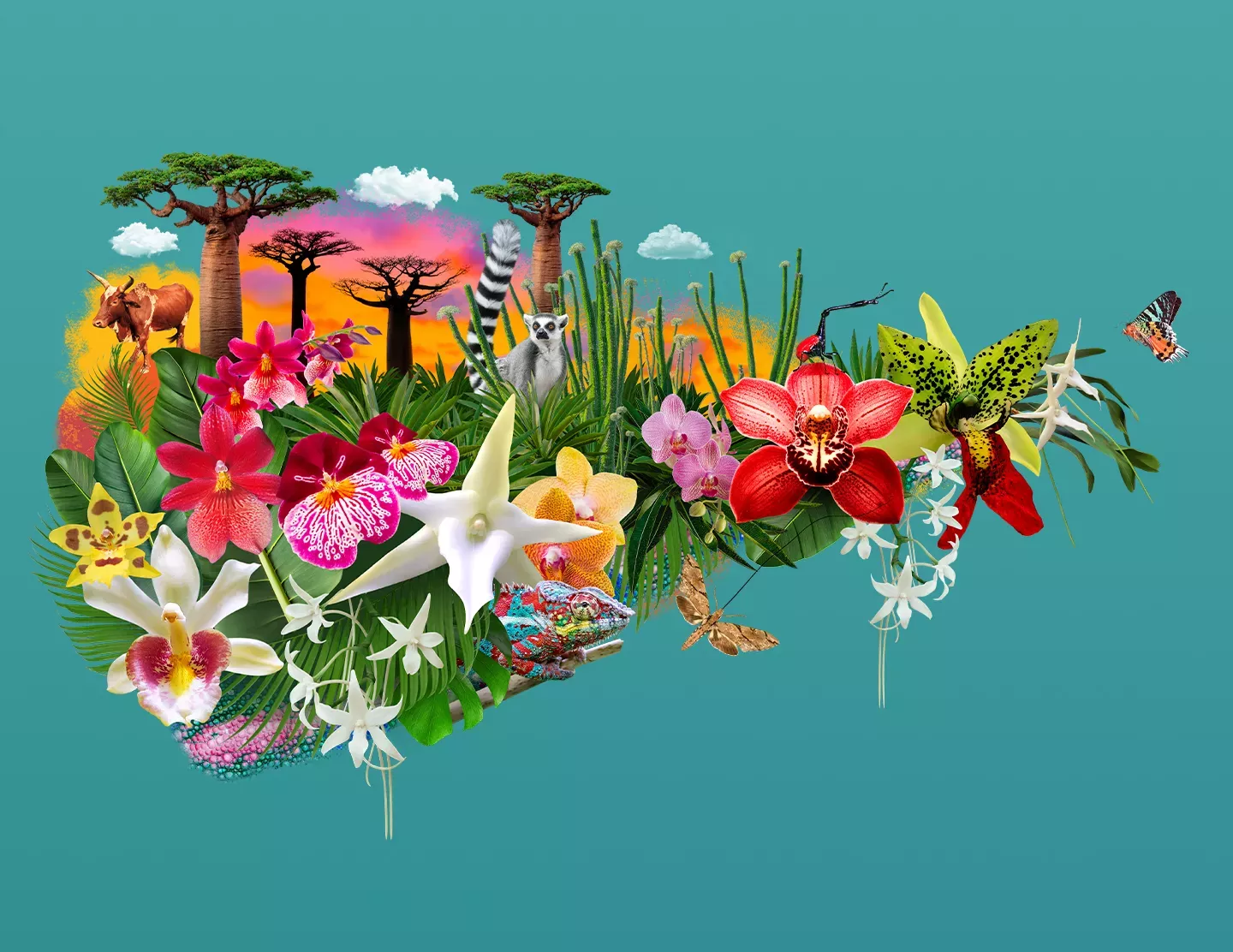15 February 2024
Community Conservation in Madagascar’s Dry Forests
The story of Kew’s work to protect one of Madagascar’s last remaining deciduous forests

In October 2023, I joined a team of Kew herbarium and Kew Madagascar Conservation Centre (KMCC) staff on a reforestation project in the dry deciduous forests of Ankarafantsika National Park, Madagascar.
I am Robert Taite, a botanical horticulturalist who works in Kew’s tropical nursery where I look after the Madagascan ex-situ collection. These are my experiences in the forest and the work we did there.

On Madagascar
Madagascar is a uniquely biodiverse place. There are approximately 12,000 species of vascular plants known in the country of which 96% are endemic, meaning they are found nowhere else. The country's natural wealth includes fascinating species such the suicide palm (Tahina spectabilis), and all known living lemurs.
Kew has been working in the country since 1986 and KMCC is the site of Kew's permanent research base in Madagascar, hosting its own team.

The Plants of Ankarafantsika
This Madagascan dry forest is home to a bounty of interesting and unique plant and animal species. Pioneer species like Karomia macrocalyx, and Chadsia versicolor are some of the first to colonise areas recently burnt by fires. Luckily, due to recent rains we were able to catch many of these tree and shrub species as they started flowering.
The forest canopy provides a shelter for a variety of herbaceous species, such as Microcoelia perrieri – a leafless orchid species that instead chooses to photosynthesise through its roots.



Deforestation in Madagascar
Unfortunately, Madagascar is heavily subject to clearing forests for fuel, timber, and agriculture, resulting in immense pressure on its biodiversity. The forest is burned so that charcoal – the main fuel source for many in the country, can be collected. The land can then be used for agriculture. Because of deforestation, the remaining forest is severely fragmented leaving the forest in Ankarafantsika one of the largest remaining in the country.
We visited Ankarafantsika near the end of the dry season when the fires are at their most frequent. Smoke from forest fires could be seen in the distance often, and at times it even blocked the sun.


The People
For the people living in and around Ankarafantsika, the forest is a valuable resource. It provides an important source of employment for forest guides and National Park staff, and local people sell wares to visitors passing through.
The communities of Ambodimanga, Befotoana, and Ampombilava are located along the road that transects the forest and are our partners on our latest project.
Once the forest has been burned it takes a long time to grow back and species are lost in the process. To accelerate the rate of forest recovery, together we set up three community-run tree nurseries.
Each one will raise a generation of seedlings that can be planted in patches destroyed by fire. Filling in these burnt patches will make the forest less fragmented, allowing species to flow more freely and creating a more resiliant ecosystem.
Community leaders like Nordine Razanamalala were instrumental in the partnership between the Kew teams and communities, helping organise the community in to working teams and sharing out tasks fairly.
The team from Kew, KMCC and our forestry partners at the Silo National des Graines Forestières (SNGF) spent the best part of a month working in the forest. Each brought their own expertise, Eric Rakotoniaina (pictured below) was a specialist in wild Yam conservation and helped set up Yam nurseries along side those we made for trees.

Nursery building
The whole community was involved at every stage of construction, from the clearing of the ground to the planting of the seeds. We built our nurseries from the basic materials that we were able to source in-country. We used wooden beams, metal wire and green shading to make serviceable shelters to protect the precious seedlings in the vulnerable first months of their lives.
Initially progress was slow. Communication was difficult for me as all the dialogue was in Malagasy, and the intense heat made the work tiresome, but by the final nursery we had refined our process and were able to construct the whole thing in a single morning!
We shared some of our horticultural expertise of yam propagation and tree seed sowing with the people in the three communities in the hope that this will help them grow these plants.


The nurseries have proven highly successful so far, producing plenty of small trees that will be ready for planting out later this year (shown below).
Once the nurseries are up and running, Kew will then buy the trees the local people grow in these nurseries and plant them out in burnt areas. Hopefully, other organisations will also buy the trees grown here, creating a source of sustainable income for the communities.


My amazing experiences here in Madagascar have been part of our work to accelerate regeneration and provide alternative livelihoods in Madagascar’s dry forests, a huge project in collaboration with Silo National des Graines Forestières and Madagascar National Parks.
I, alongside the rest of my Kew project team members – Jenny Williams, Vonona Randrianasolo, Stuart Cable, Nomentsoa Randriamamonjy, and Marcella Corcoran – can't wait to see to see how it develops over the coming months and years.
As I write this here in February 2024, the rainy season has just begun, and there's a whole lot of planting to be done!




